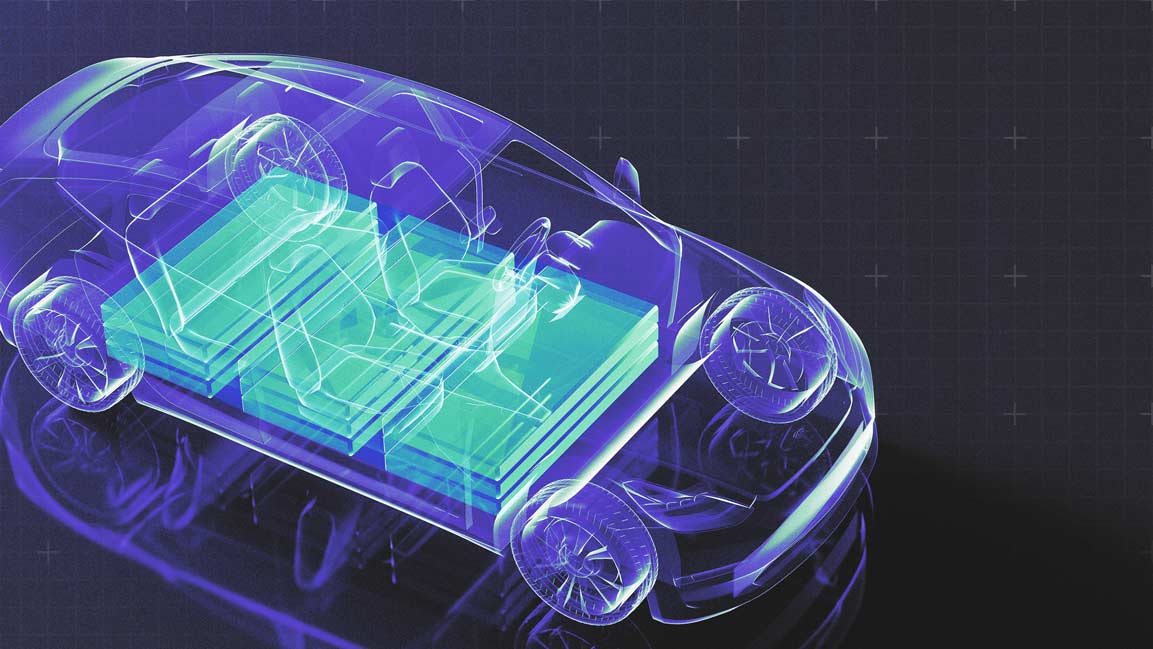- | 9:00 am
Can the Middle East take the lead in aerospace manufacturing?
The evolution of the aerospace industry can catalyze the impact of space exploration

For decades, the Middle East had traditionally depended on foreign nations in space technology and exploration. But the region is now transforming its relationship with space.
Since 2015, seven Middle Eastern countries have introduced new national space policies or strategies. They have not only sent astronauts into space but have witnessed a threefold growth in their space industry over the past decade—from $8 billion to $25 billion, which could reach as much as $75 billion by 2032.
Yet, for the Middle East to reach the stars, the imperative lies in vigorously propelling the space industry’s efforts and investments toward aerospace manufacturing and technology.
DEVELOPMENT AND ADVANCEMENT
Michael Deshaies, CEO of EPI, an EDGE Group entity specializing in manufacturing engineering components for the defense, aerospace, and oil and gas sectors, says that the aerospace industry in the Middle East, particularly the UAE, has made significant developments in key areas such as airframe manufacturing and assembly, aerospace hubs and infrastructure, and aviation maintenance, repair, and overhaul (MRO).
As the UAE has actively invested in aerospace manufacturing and related industries to diversify the economy, several significant initiatives and developments have occurred in the sector.
The government has also made substantial investments in research and development, innovation, and technology to foster growth in the aerospace industry.
They have developed educational programs and partnerships to train highly skilled individuals in aerospace engineering and related fields. Additionally, partnerships with international aerospace companies and organizations have been established to leverage expertise and promote knowledge transfer.
Matthew Cochran, Chairman and CEO of the Defense Services Marketing Council, further emphasizes that the UAE sees space as more than just a place for scientific research. It advocates for space rules to preserve space as a haven for peaceful purposes, viewing it as a means of fostering international cooperation and diplomacy.
Also, the UAE’s strategic investments in aviation and space constitute an integral part of its overarching plan to diversify its economy and move away from dependency on fossil fuels.
Estimated to be worth $24.5 billion in 2023, the Middle East space market, while still relatively small and making up just 5.3% of the global market, is on a fast growth trajectory. This growth is fueled by an unprecedented momentum anticipated to propel its expansion, with a market size expected to more than double, hitting the $57 billion mark by 2030.
Electric propulsion systems are also revolutionizing aircraft components, making airplanes more efficient by reducing fuel consumption and emissions.
The transition to electric propulsion significantly influences airframe design, says Deshaies, with engineers rethinking the structure to accommodate motors and batteries.
“This shift allows for more streamlined and aerodynamic designs, although EPI’s main niche is on wide-body single and twin-aisled aircraft.”
Effective electrification for such aircraft might take some time for widespread adoption, but the progress is promising.
The manufactured airframe must withstand intense forces and high temperatures regarding supersonic flight technologies. Titanium structures will be very popular on these platforms, Deshaies adds.
Camil Tahan, Partner at Strategy& and a member of the firm’s Mobility, Aerospace, Infrastructure, and Tourism practice in the Middle East, says electric propulsion systems are placing various demands on aerospace manufacturers, including integrating additive manufacturing for crafting lightweight and intricate components.
Additionally, hybrid propulsion systems need to be developed to improve the range and efficiency of advanced air mobility (AAM) vehicles. Another critical focus is enhancing energy density and range by creating lighter, more durable batteries.
Deshaies notes that advancements in lightweight materials, such as composites and alloys, have also influenced manufacturing processes in aerospace.
“Lightweight materials like composites and alloys have positioned EPI in a favorable position for primary flight safety airframe.”
The titanium alloy has impressive strength-to-weight properties, making it ideal for commercial aviation, and rapid adoption of FAA-approved 3D-printed near-net shape, or close-to-final-shape, items for secondary structures is observed. There is a significant push towards integrating these products into primary structural components.
TECH INTEGRATION IN AEROSPACE MANUFACTURING
New technologies play a significant role in transforming and enhancing aerospace manufacturing.
Tahan notes that in quality control, blockchain plays a pivotal role by ensuring the traceability and authenticity of components, thereby preventing counterfeits.
In safety, AI models are utilized for predictive safety analysis, leveraging historical data to identify patterns and predict potential safety issues. The pursuit of efficiency is evident through various technological advancements.
He adds that AI facilitates the adoption of digital twin technology, enabling virtual testing, prototyping, and optimization. Additionally, integrating additive manufacturing, such as 3D printing, into the manufacturing process expedites prototyping and the production of components.
Also, machine learning is harnessed for design optimization, employing generative design processes to explore multiple design possibilities and optimize products for specific parameters. Tahan says this convergence of technologies is reshaping aerospace manufacturing by enhancing quality, safety, and efficiency across various facets of the industry.
Deshaies also notes that AI plays the most significant role in aerospace manufacturing, contributing to various aspects of the production process. “This is a massive topic with overwhelmingly positive feedback and favorable impacts on efficiencies and productivity. To name a few, AI influences process optimization, quality control, robotics and automation, cybersecurity, and data analytics.”
Other examples include algorithms capable of analyzing large datasets to optimize production planning, ensuring efficient scheduling of tasks, and minimizing downtime.
Moreover, AI-powered computer vision systems can perform automated inspections of aerospace components, detecting defects and ensuring high-quality controls.
“The integration of AI in aerospace manufacturing not only enhances efficiency and productivity but also contributes to advancements in design, safety, and overall innovation within the aerospace industry,” adds Deshaies.
SOARING INTO SPACE TOURISM
In 2023, Virgin Galactic initiated their regular commercial sub-orbital flights, taking customers to the edge of space, while Blue Origin’s New Shepard sub-orbital uncrewed vehicle was successfully launched after a 15-month hiatus, marking some of the notable developments in this novel field, says Tahan.
Private companies are attracting global attention and garnering interest from Middle Eastern investors.
“Notably, Abu Dhabi wealth fund Aabar Investments Group made significant investments in Virgin Galactic, underlining the region’s commitment to fostering a presence in the rapidly evolving space tourism market as far back as 2010,” says Cochran.
In the Middle East, space tourism has experienced renewed interest in recent years despite its long-term commercial potential.
Various nations across the region have initiated market and feasibility studies to explore opportunities across different space tourism segments, such as space hotels and ground-based space tourism facilities. “We have also started to see space tourism being integrated into some of the future airports and infrastructure development concepts,” says Tahan.
MIDDLE EAST’S ECONOMIC CATALYST?
The aerospace achievements signal more than technological progress. Cochran says, notably, women are breaking barriers, becoming scientists, astronauts, and engineers, marking a profound shift in the cultural and professional landscape.
For Tahan, aerospace technology’s contribution to the economy extends through direct and indirect channels, significantly contributing to job creation and GDP.
“The successful development of aerospace has paved the way for advanced technologies manufacturing to grow, and several Middle East-based companies are in the field of advanced industries manufacturing,” says Tahan, adding that several countries are pursuing localizing a greater share of their spending on products and services.
They are also recognizing the strategic importance of investing in aerospace capabilities for economic diversification, national security, and technological advancement, adds Deshaies.







































